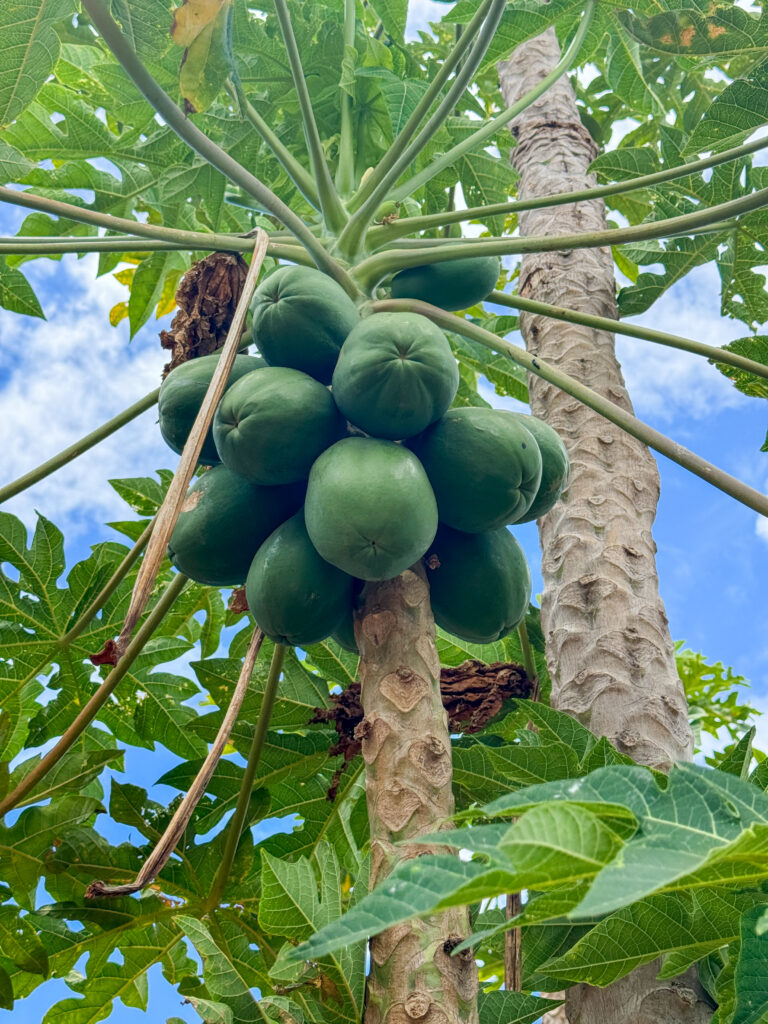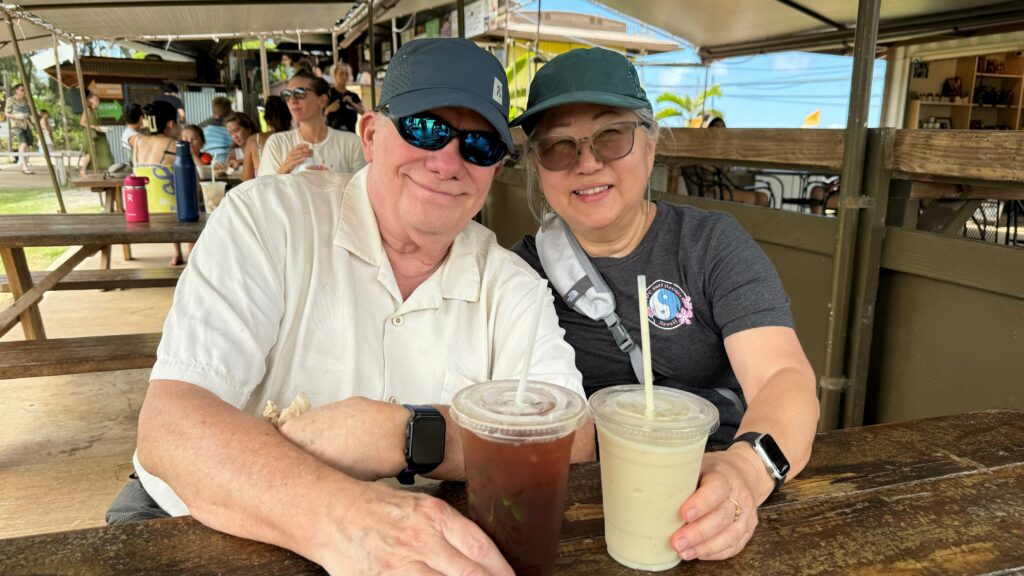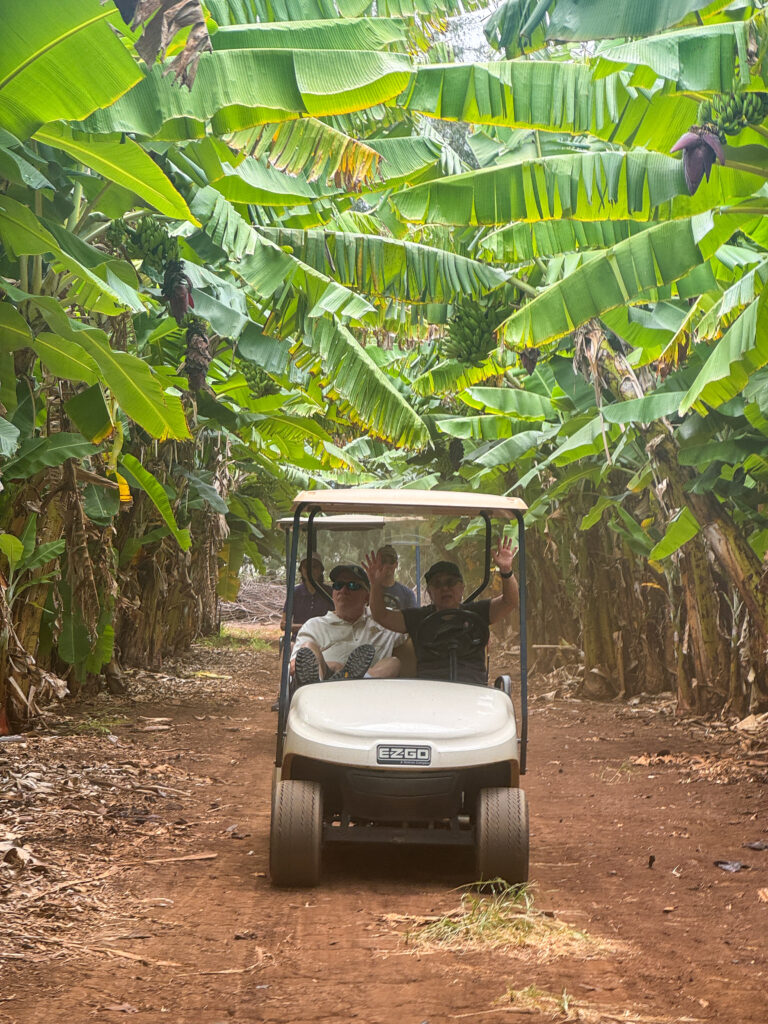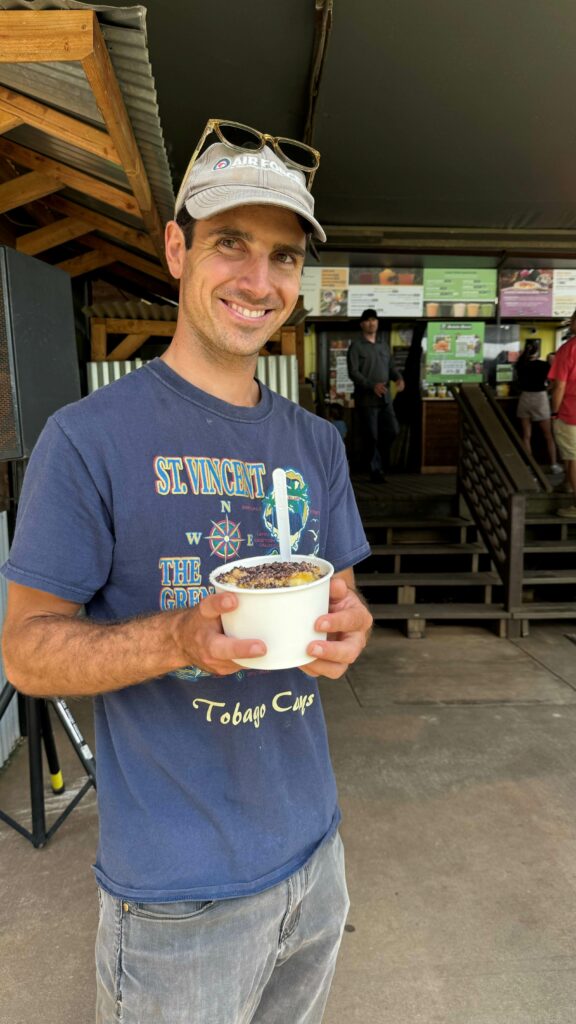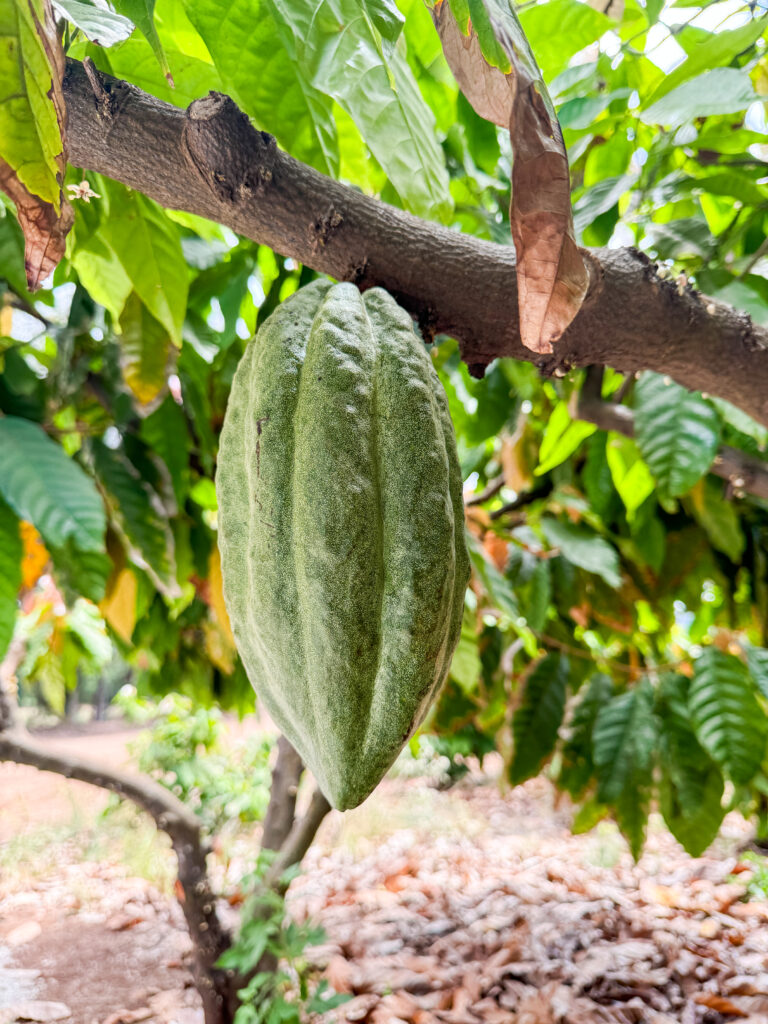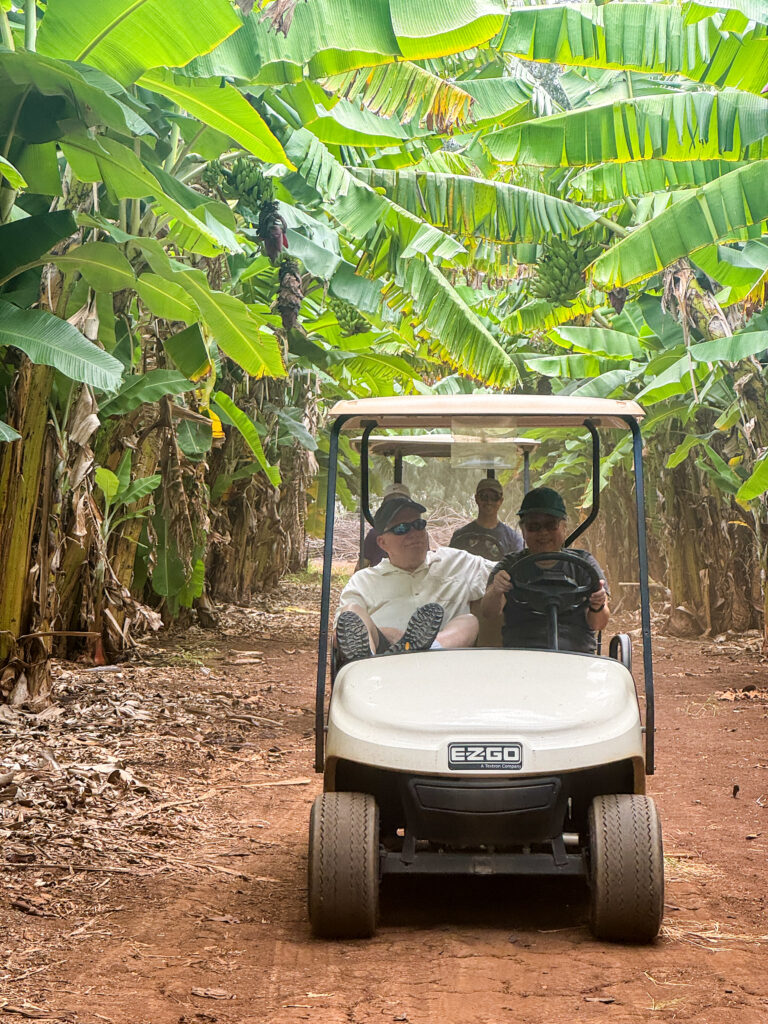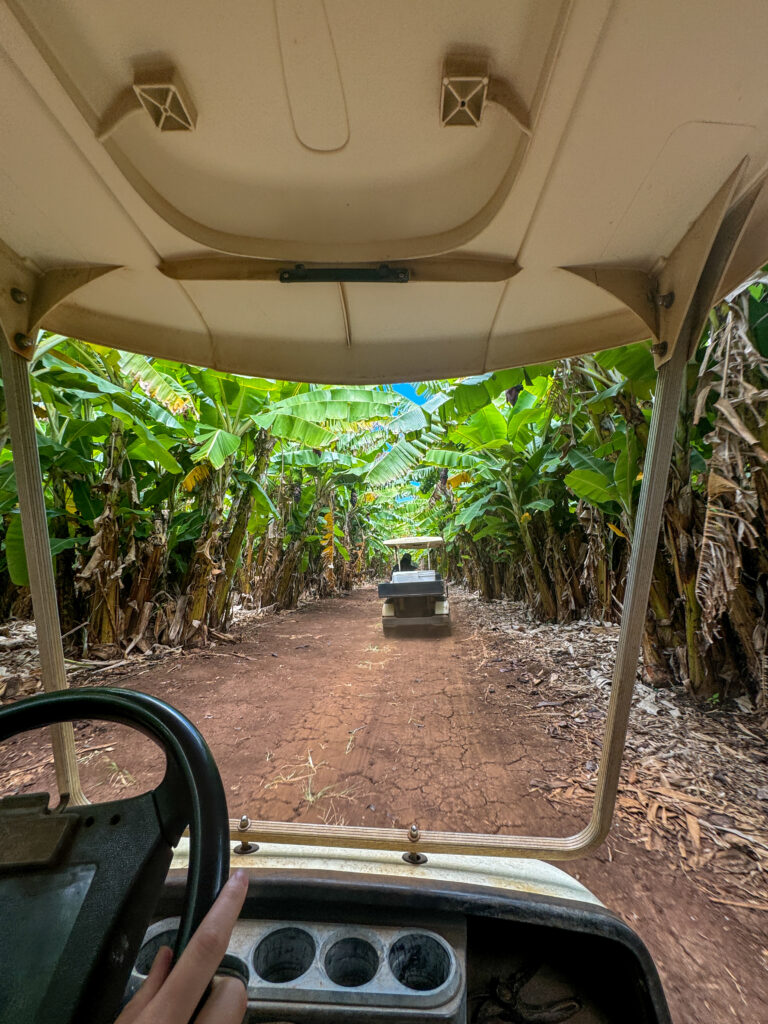Exploring Sustainable Farming: InForm Design Visits Kahuku Farms
This past weekend, a few of our staff members ventured up to the North Shore to tour Kahuku Farms, a private family owned farm with more than 100 years of history. Behind the location’s farm-to-table cafe lies over 140 acres of farmland, which we had a blast touring via golf carts.

We passed under lots of apple banana trees, acai palms, fields and fields of eggplant, papaya trees, cacao, taro, avocado, and even bee hives. To our amazement, this massive farm operation is staffed by only 20 individuals who work year-round to plant, harvest, and cycle the fields in a way which gives the soil time to naturally regenerate and produce more bountiful harvests. Only about 50% of the total acreage is used for farming at a time, this is how they ensure that the soil and fields remain healthy, rich, and fertile.
The mission of Kahuku farms is to feed the people of Hawai’i. They sell their Grade A harvest to local grocery across the state like Safeway, Foodland, and Don Quijote. But of course, not every fruit or piece of produce lives up to the Grade A standard. Rather than waste a perfectly good piece of fruit or produce simply because it might have a bump or bruise, Kahuku farms utilizes these directly in their farm-to-table cafe menu, and you can take our word for it – their food, smoothies and chocolates are truly delicious. They even have take home products for sale like a lilikoi balsamic dressing. lilikoi butter, cacao nibs, hot fudge, honey and more.

Being on this tour and out in the fields learning about how they care for the land filled us all with a sense of joy and appreciation. The abundance and variety of foods growing here was so different than the large, primarily corn-focused monocrop agriculture farms that can be found elsewhere. Why can’t there be more farms like this in Hawai’i? Why can’t Hawai’i have food sovereignty, or be food-independent, and grow everything our population needs to eat right here? Searching for an answer to this question took me down a deep rabbit hole of research. In fact, Civil Beat has an ongoing series about this topic called Hawai’i Grown.
An article entitled Food Sovereignty in Hawaii by Paulina Jany and published by the University of Hawaii at Hilo said, “about 85-90% of Hawaiʻi’s food is imported. Corn, a crop foreign to Hawaiʻi, has become the stateʻs largest cash crop.”
The same article said that a solution is in fact, quite possible, “Additionally, studies have shown that Hawaiʻi can become self-sustaining with proper land management and usage. According to Brittany Lyte, an author at Civil Beat, only 6% of Hawaiʻiʻs land could have produced more than a million metric tons of food [which] could feed 86% of the islands’ current population of 1.43 million.”
There are number of obstacles in the way of this goal. Among them are a shrinking number of farms in Hawai’i, not enough agriculture land devoted to growing crops, and zoning and infrastructure issues.
I think above all else, farmers need to be incentivized and supported. Programs like Kamehameha Schools’ ‘Aina Pauahi food systems initiative is a wonderful start, however there is still much more progress to be made.
Thank you to Kahuku Farms for boldly tackling this initiative to feed Hawai’i, for enlightening us about the importance of this issue, and for giving us a wonderful experience visiting the farm.
As an architecture and interior design firm, experiences like this give us new perspectives which we carry into our work going forward and motivate us to also become a part of the solution.
